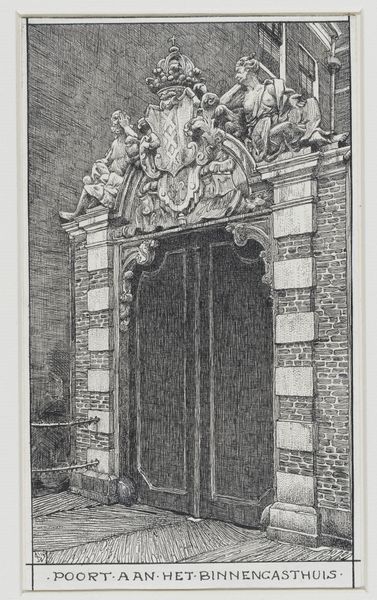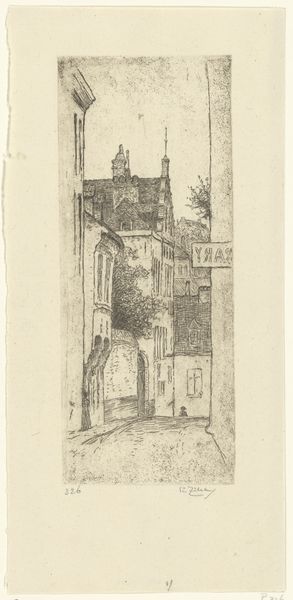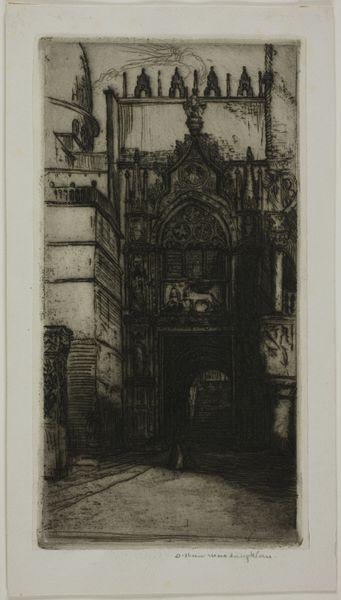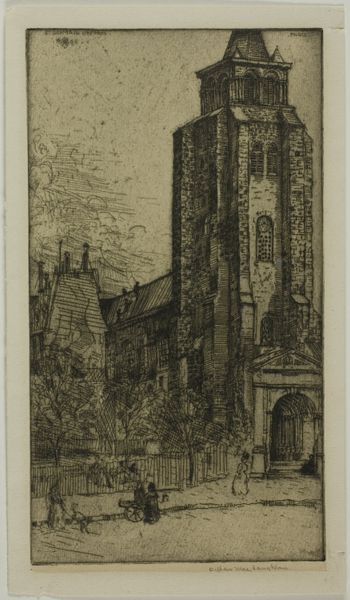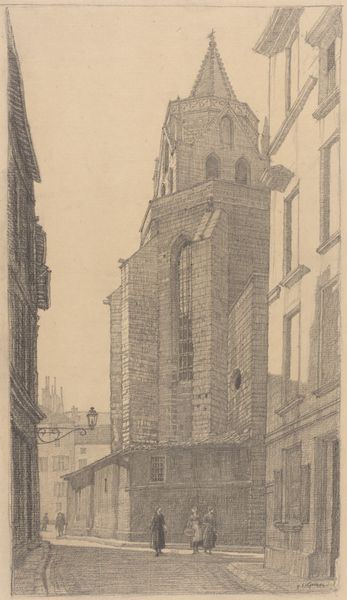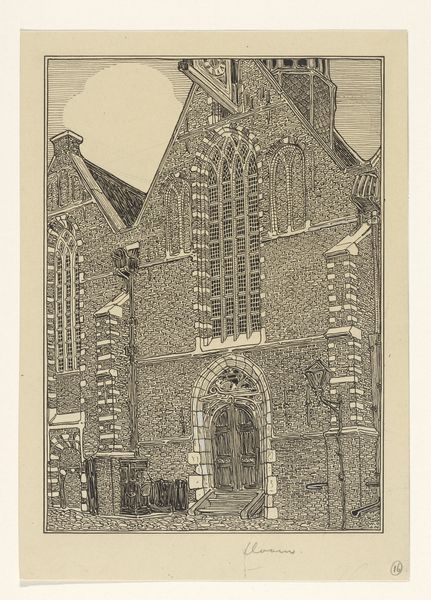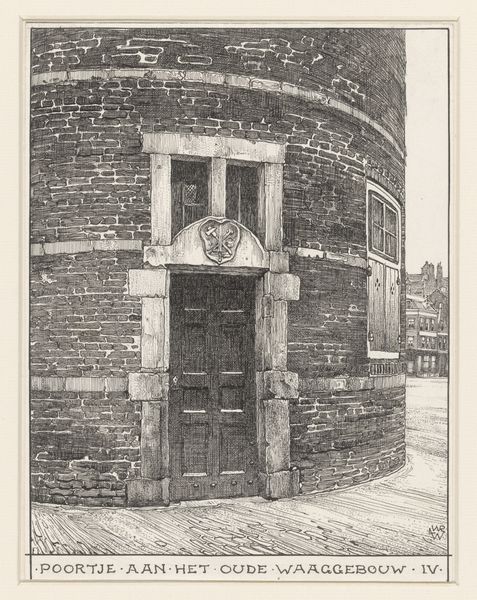
Het portaal van de Agnietenschool aan de Oudezijds Voorburgwal te Amsterdam 1870 - 1926
0:00
0:00
drawing, print, etching, architecture
#
drawing
# print
#
etching
#
etching
#
cityscape
#
architecture
Dimensions: height 219 mm, width 149 mm
Copyright: Rijks Museum: Open Domain
Curator: This is Willem Wenckebach's etching, "Het portaal van de Agnietenschool aan de Oudezijds Voorburgwal te Amsterdam," created sometime between 1870 and 1926. Editor: The level of detail is just incredible, and unsettling somehow. The portal seems weighed down, oppressive, almost as if the building is actively trying to keep you out. Curator: Wenckebach clearly wanted to document the Agnieten School’s architecture, situated as it was in the heart of Amsterdam’s red light district. Its impressive entrance stood as a sort of... bulwark. Editor: Exactly! Against what, though? A school, particularly a girls' school like this one was, becomes a site for negotiating power, gender roles, and societal expectations. It’s not merely an architectural rendering; it reflects the societal anxieties around female education and safety during that time. Curator: You are right. There's a sharp contrast between the almost theatrical ornamentation of the gateway and what was really happening within those walls. Schools like Agnieten played a vital role in social engineering, shaping young minds in accordance with prevailing ideologies. The etching allows us to consider who had access to knowledge and on what terms. Editor: The stark black-and-white medium emphasizes those binaries – in/out, learned/unlearned, safe/unsafe. I think the building also physically dominates the neighborhood with a constant reminder about who holds privilege. It makes me wonder about the narratives and voices we lose when structures like this are valued over, say, personal narratives from people on the street. Curator: It does create an interesting dialogue between the public and private realms, doesn't it? While appearing imposing, this institution undeniably opened doors for countless women—even as that entrance symbolized certain restrictions. The fact it faced the red light district also forces reflection on who gets a free pass and the gendered social norms of Dutch society. Editor: Absolutely. Looking at Wenckebach's etching encourages reflection on historical structures of power and the ongoing work to build more equitable and inclusive environments. Curator: I’d say this piece serves as a potent reminder that art, even when seemingly objective like architectural prints, is deeply embedded in a socio-political context. Editor: It compels me to continuously question whose stories are amplified and whose remain untold.
Comments
No comments
Be the first to comment and join the conversation on the ultimate creative platform.
